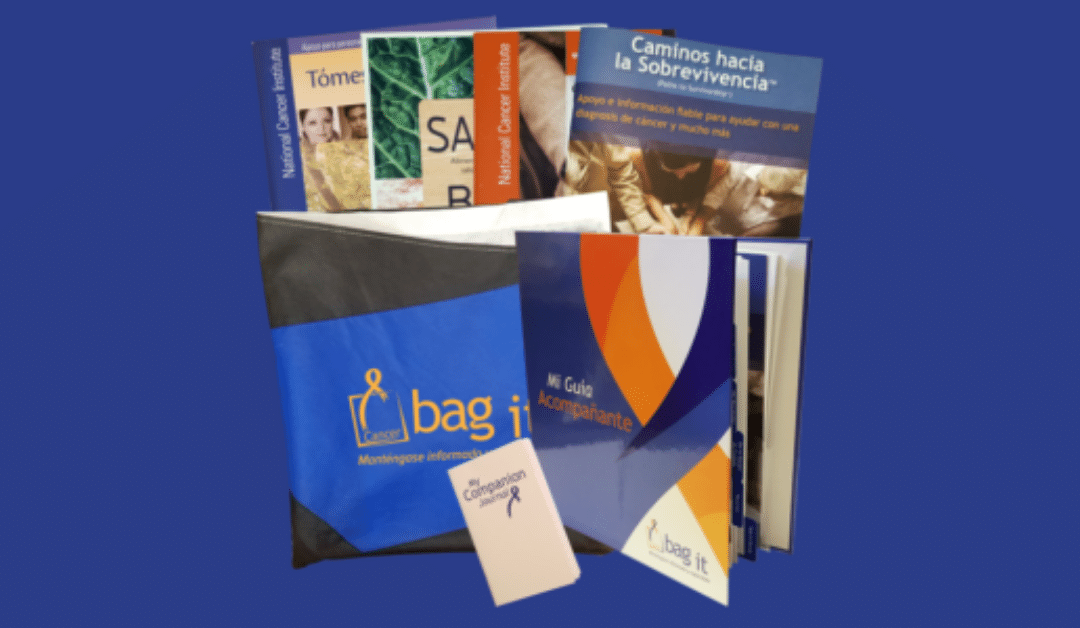
by Annettra Farrington | Jun 29, 2019 | What's New
 We’re excited to announce that the Spanish version of the new Bag It bag is now available. Each printed booklet and the entire contents of My Companion Guidebook (Mi guía acompañante), including the forms, instructions, and glossary, have been professionally translated into neutral Spanish to be easily understood by all Spanish speakers. This is especially important as Bag It expands distribution across the country this year. See it here
We’re excited to announce that the Spanish version of the new Bag It bag is now available. Each printed booklet and the entire contents of My Companion Guidebook (Mi guía acompañante), including the forms, instructions, and glossary, have been professionally translated into neutral Spanish to be easily understood by all Spanish speakers. This is especially important as Bag It expands distribution across the country this year. See it here
Wait – there’s more!
Check out the Resource Center on our website for a list of Spanish resources covering many cancer-related topics such as information about cancer types and treatment, coping with side effects of cancer treatment, emotional support for families, communicating with children, nutrition and eating tips, complementary and integrative medicine, legal rights, financial assistance, cancer survivorship, and more.
Order a bag today
¡EL BOLSO BAG IT EN ESPAÑOL YA ESTÁ AQUÍ!
Estamos muy contentos de anunciar que la versión del bolso Bag It en español ya está disponible. Cada carpeta publicada y el contenido completo de My Companion Guidebook (Mi Guía Acompañante), incluso los formularios, las instrucciones, y el glosario, han sido traducidos profesionalmente al español neutral para que cualquier hispanohablante pueda enterderlos fácilmente. Esto es especialmente importante debido a que este año, Bag It expandirá su distribución por todo el país. Véase aquí
Pero espere… ¡Hay más!
Revise el Centro de Recursos en nuestra página web para obtener una lista de recursos en español que cubren una variedad de temas relacionados con el cáncer, tales como información sobre los tipos de cáncer y sus tratamientos, cómo enfrentar los efectos secundarios del tratamiento contra el cáncer, cómo obtener apoyo emocional para familias, cómo hablar con los niños sobre estos temas, sugerencias sobre la nutrición y la alimentación, la medicina natural e integral, los derechos legales, asistencia económica, la sobrevivencia del cáncer, y mucho más.
Ordene su bolso de Bag It
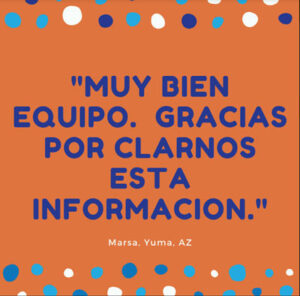
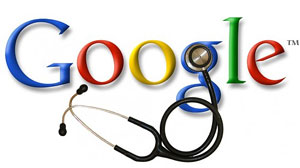
by Annettra Farrington | May 28, 2019 | Educational Articles
Is there a doctor (Google) in the house?
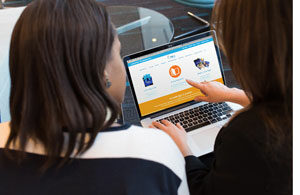 Most of us immediately want to search online when facing a cancer diagnosis. The internet can be a good source of reliable and helpful information. At the same time, unfortunately, fake medical news and misinformation spreads further than the truth – and can lead to serious consequences.
Most of us immediately want to search online when facing a cancer diagnosis. The internet can be a good source of reliable and helpful information. At the same time, unfortunately, fake medical news and misinformation spreads further than the truth – and can lead to serious consequences.
Best Practices for Internet Research:
- First ask your health care team for trusted websites they recommend for you.
- Visit Bag It’s resource center to find over 150 resources on all cancer topics.
- Websites from these organizations are generally reliable:
- Government agencies (web address ends .gov)
- Major cancer centers (web address often ends .org)
- Medical schools and universities (web address ends .edu)
- Large nonprofit organizations (web address ends .org)
- Look for easy-to-read information written by medical professionals.
- Check more than one source for the same information to verify that the results are the same.
Things to consider when evaluating a website:
- Be critical – is the content objective and free of opinion?
- Who sponsors the site and its content? Who wrote the content and what are their credentials? Who approved it? Reading the “About Us” and “Who We Are” pages can be insightful.
- What is the source of the information presented? Particularly if scientific in nature, was the content written within the last three years and is it supported by the scientific literature?
- Be aware that information on sponsored websites or .com websites may be biased or have a conflict of interest, though the information could still be reliable (such as a drug company’s site)
- Think carefully before sharing personal/health information in online communities. Does the community safeguard your privacy? Refer to the privacy policy, if any.
Remember that the internet is not a substitute for professional medical care and advice. Discuss any information you find with your health care team to help you determine if it is right for you.

by Annettra Farrington | Apr 16, 2019 | Educational Articles
What is Self-Advocacy and why is it important?
 Self-advocacy is taking a proactive approach to being part of your healthcare team to ensure your needs are met and you are more in control to live your best life possible with cancer. It includes learning how to educate yourself with reliable information, knowing your rights, listening, and asking the right questions to make sound decisions. Being able to clearly communicate with others and feeling comfortable in making yourself heard are important. Reaching out to others when you need help is another form of self-advocacy and self-respect.
Self-advocacy is taking a proactive approach to being part of your healthcare team to ensure your needs are met and you are more in control to live your best life possible with cancer. It includes learning how to educate yourself with reliable information, knowing your rights, listening, and asking the right questions to make sound decisions. Being able to clearly communicate with others and feeling comfortable in making yourself heard are important. Reaching out to others when you need help is another form of self-advocacy and self-respect.
Bag It’s NEW publication Paths to Survivorship and other contents in your bag guide you on how to advocate for yourself from the moment of diagnosis and beyond.
How to Advocate for Yourself:
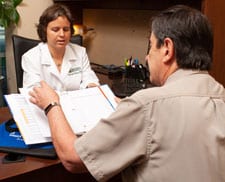
- Use your Bag It My Companion Guidebook to organize and track your own information. It’s a handy reference and a good back up if something gets lost. Request copies of your records, labs and test results at every appointment. Store them in the 3-ring guidebook with the most recent on top.
- Write down your questions before your appointment and then write down the answers.
- Bring someone with you to every appointment. A second pair of ears is helpful. They can take notes or record what’s said (ask permission first).
- Visit only reliable websites for cancer information. See Bag It’s resource page for more than 150 websites.
Resource topics include:
- Types of Cancer
- Clinical Trials
- Side-Effects
- Survivorship
- Caregivers and Family Resources
- Parenting and Fertility
- Supportive Care—Emotional Support, Palliative Care, Complementary & Integrative Therapies
- Insurance, Managing Costs, and Financial Assistance
- Legal Rights, Workplace, Advance Care Planning
- Resources in Spanish
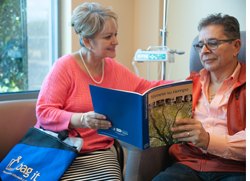 If you were recently diagnosed:
If you were recently diagnosed:
- Assemble and work closely with all the members of your healthcare team.
- Learn about your cancer diagnosis and treatment options with potential side effects to help you make informed decisions about your treatment and care. Consider getting a second opinion.
- Use the My Appointments Summary Log found in My Companion Guidebook to write down your questions in advance of appointments. Make sure you fully understand the answers provided and take notes.
- Bring someone with you to every appointment, especially at the beginning.
- Express fully and honestly what you need and want—to your healthcare team, caregivers, family members, and friends.
- Watch our short “How to use the Bag It bag” video.
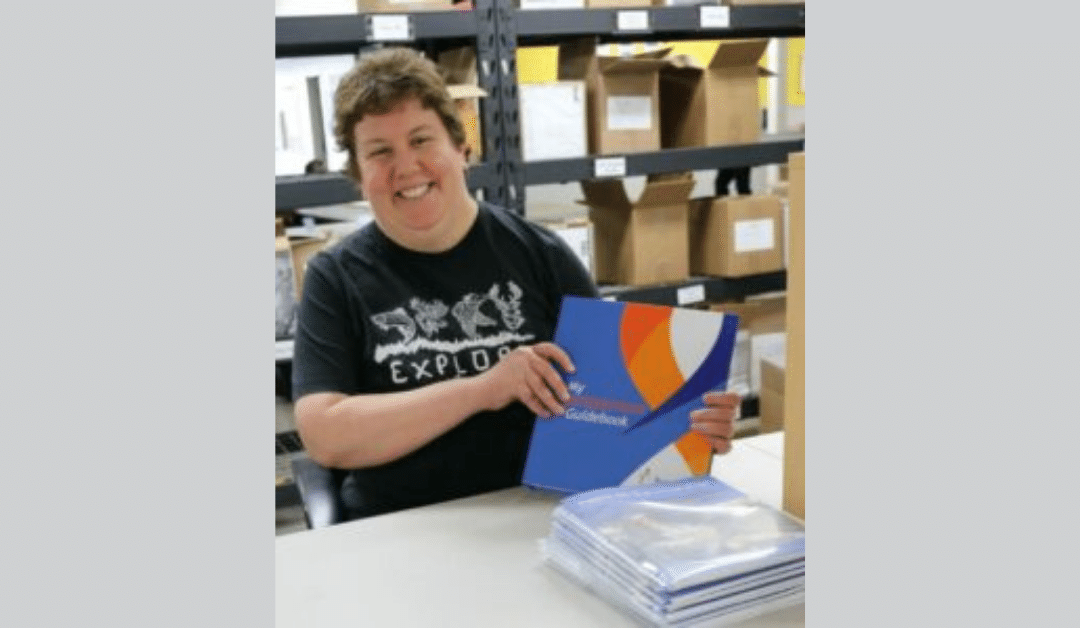
by Annettra Farrington | Mar 26, 2019 | What's New
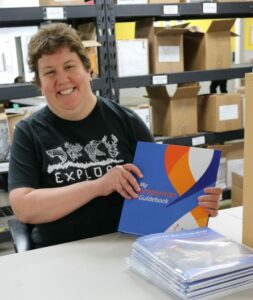 Written by Beacon Group…
Written by Beacon Group…
For the last eight years, Beacon Group has assembled bags for Bag It, one of the country’s leading resource centers for cancer recovery that provides resources, tools, and services for patients, caregivers and advocates. The resource bags that Beacon puts together include a wide variety of materials that need to be collated, inserted and packaged in a specific way.
Beacon assembles over 8,000 bags per year, and that number is expected to grow as Bag It expands distribution across the country. Teamwork was a big part of the process, especially when major changes for Bag It’s organization required production adjustments for a new bag design. Flexibility and communication strengths from both sides contribute to the success of the arrangement. Bag It’s executive director, Mindy Griffith, explains ”I like the idea that we are supporting individuals with disabilities of course. But your service is phenomenal! If we have questions, they are answered quickly. If there are problems, they are taken care of.”
Read more…

by Annettra Farrington | Jan 28, 2019 | Events, What's New
TAKE A HIKE + YOU =
A great fun filled Sunday morning at Catalina State Park celebrating 15 years of Take a Hike for Bag It ! Whether you joined us for a beautiful scenic morning, sponsored a bag from home, or were with us in spirit, we appreciate your support!
Dan Marries, Tucson News anchor, welcomed our hikers back to the Ramada that was rocking to the music from LatinoBazaar and encouraged them to join in on all the fun and activities! Guests enjoyed their meal choice from Gigi’s food truck, a chance to win fabulous prizes in the Raffle, Silent Auction, and Spin the Wheel and played “Where’s the Bag It bag.” Sandra Valenzuela, a volunteer that has been with Bag It from the very beginning shared about how she got started and why she continues to volunteer and support Bag It. We were able to say a big THANK YOU to founding board member, Dr. Don Brooks, who recently stepped down after 15 years of board service (don’t worry we’re going to keep him involved in some aspect) and acknowledged eight sponsors who have supported Bag It for all 15 years. With the help of 55 wonderful volunteers, 150 awesome attendees, and 19 generous sponsors, Bag It was able to raise over $38,000 to help EDUCATE, SUPPORT & EMPOWER those impacted by cancer.
SPONSOR A BAG

These donations help ensure that anyone who wants a Bag It bag can receive one at no charge. If someone does not receive a bag from their medical provider and are unable to make a suggested donation they can call us and because of YOU we are able to send them a bag to help them be informed and feel empowered to be their own advocate.
Thank you for providing 60 individuals with cancer a bag through your Sponsor a Bag donations.
And the winner is . . . Rosa Rousseau. Congratulations Rosa! We hope you have a great time when you journey to Phoenix.

 We’re excited to announce that the Spanish version of the new Bag It bag is now available. Each printed booklet and the entire contents of My Companion Guidebook (Mi guía acompañante), including the forms, instructions, and glossary, have been professionally translated into neutral Spanish to be easily understood by all Spanish speakers. This is especially important as Bag It expands distribution across the country this year. See it here
We’re excited to announce that the Spanish version of the new Bag It bag is now available. Each printed booklet and the entire contents of My Companion Guidebook (Mi guía acompañante), including the forms, instructions, and glossary, have been professionally translated into neutral Spanish to be easily understood by all Spanish speakers. This is especially important as Bag It expands distribution across the country this year. See it here


 Most of us immediately want to search online when facing a cancer diagnosis. The internet can be a good source of reliable and helpful information. At the same time, unfortunately, fake medical news and misinformation spreads further than the truth – and can lead to serious consequences.
Most of us immediately want to search online when facing a cancer diagnosis. The internet can be a good source of reliable and helpful information. At the same time, unfortunately, fake medical news and misinformation spreads further than the truth – and can lead to serious consequences.
 Self-advocacy is taking a proactive approach to being part of your healthcare team to ensure your needs are met and you are more in control to live your best life possible with cancer. It includes learning how to educate yourself with reliable information, knowing your rights, listening, and asking the right questions to make sound decisions. Being able to clearly communicate with others and feeling comfortable in making yourself heard are important. Reaching out to others when you need help is another form of self-advocacy and self-respect.
Self-advocacy is taking a proactive approach to being part of your healthcare team to ensure your needs are met and you are more in control to live your best life possible with cancer. It includes learning how to educate yourself with reliable information, knowing your rights, listening, and asking the right questions to make sound decisions. Being able to clearly communicate with others and feeling comfortable in making yourself heard are important. Reaching out to others when you need help is another form of self-advocacy and self-respect.
 If you were recently diagnosed:
If you were recently diagnosed: Written by Beacon Group…
Written by Beacon Group…


Recent Comments